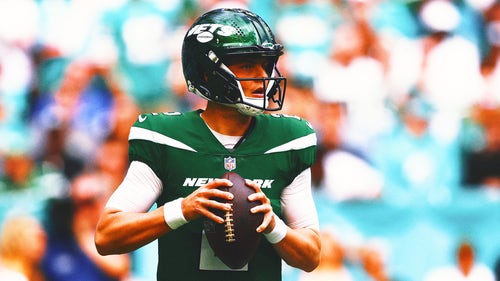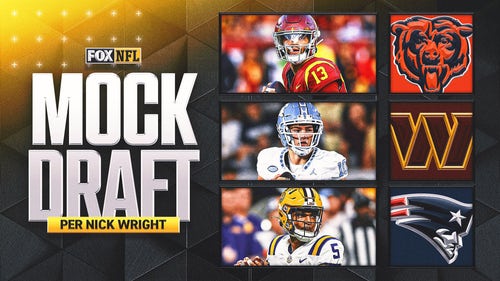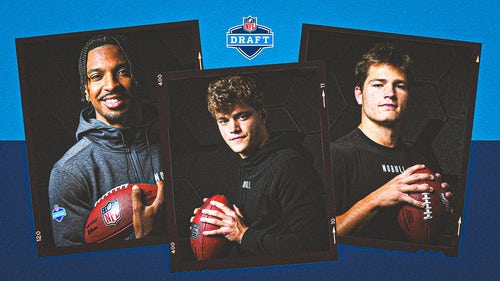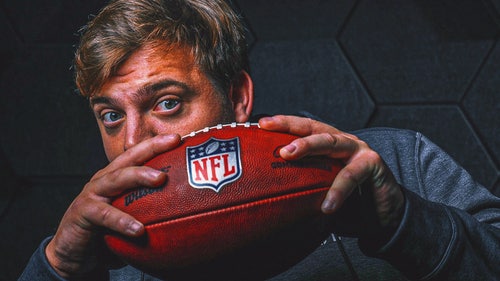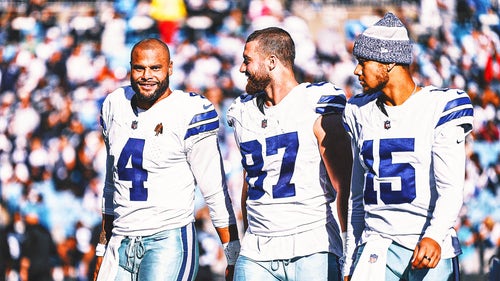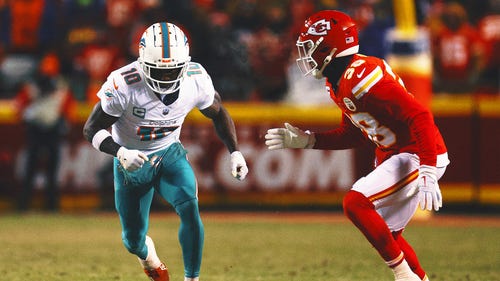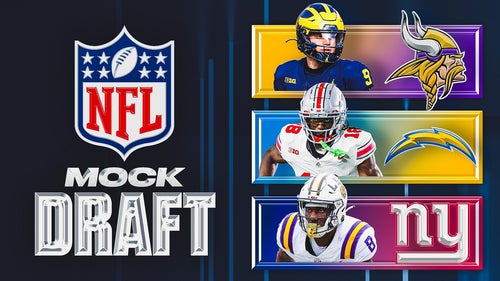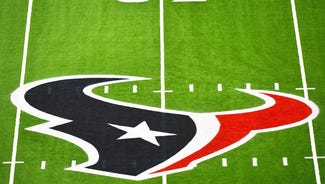
Drafting QBs is no longer big risk
When Andrew Luck and Robert Griffin III are selected first and second overall in the first round of this week’s NFL Draft, they’ll become just the fifth quarterback duo to go first and second since the NFL and AFL combined drafts in 1967.
If history serves as any lesson, at least one of them will have great success.
The other? Eh, not so much.
Of the five quarterback duos to go 1-2 since 1967, only one saw both quarterbacks go on to start 80 games over the course of their NFL careers. That pairing, Jim Plunkett and Archie Manning in 1971, had its own quirks, asterisks and “yeah, buts.” Plunkett, the Patriots’ top pick out of Stanford (like Luck), was initially deemed a bust after six mediocre years in New England. He didn’t find success until after he bounced to one team (San Francisco), then another (Oakland), where he finally won two Super Bowl rings in the latter part of his career. Manning, Peyton and Eli’s father, retired after 13 NFL seasons having never played on a team that notched a winning record or made the playoffs.
The other 1-2 duos don’t even come close to the cumulative “success” of Plunkett and Manning.
Drew Bledsoe and Rick Mirer (1993), Peyton Manning and Ryan Leaf (1998), and Tim Couch and Donovan McNabb (1999) were all 50/50 scenarios. Mirer had a somewhat promising start to his career in Seattle, only to fizzle out as an NFL journeyman before retiring in 2004 with seven NFL teams listed on his resume. Both Leaf and Couch were out of the league altogether within five seasons.
Though the track record for 1-2 quarterbacks isn’t very good, I strongly believe that both Luck and Griffin III — in Indianapolis and Washington, respectively — will have fine NFL careers. I also think this is the start of many 1-2 NFL Draft quarterback combos to come.
The days of the Top 5 quarterback bust seem to be behind us. Bold comment, I know. But let’s look at the numbers.
Since 2008, only five quarterbacks have been taken with top five picks. Of those five — Matt Ryan in 2008, Matt Stafford and Mark Sanchez in 2009, Sam Bradford in 2010 and Cam Newton in 2011 — there have been no colossal failures. Each player — including the oft-criticized Sanchez — is the franchise quarterback of his team. Of all five quarterbacks, Sanchez, ironically, is the only one to have won an NFL playoff game. Ryan, Stafford, Newton and Bradford — though he took a step back in 2011 — are the unquestioned leaders of their locker rooms and the faces of their franchises.
Since the pass interference and quarterback protection rules changed in the middle of the 2000’s, the game has completely evolved into a passing league. Quarterback has become the first, second, third and fourth most important position on the field. In 1981, two running backs went in the first three picks. We might never see two running backs taken in the first round again. We’ll never again see two taken with the top two selections.
You don’t win a Super Bowl without a star quarterback. You can’t. Though San Francisco and Baltimore flirted with the possibility last season, Eli Manning’s Super Bowl XLVI MVP performance continued a trend of star quarterback-led teams hoisting the Lombardi Trophy in February. Since journeyman Brad Johnson won a Super Bowl with Tampa Bay in 2002, Tom Brady, Ben Roethlisberger, Peyton Manning, Eli Manning, Drew Brees and Aaron Rodgers are the only quarterbacks to win Super Bowls. You can make Hall of Fame arguments for five of the six players already, and Rodgers is well on pace to be a part of the conversation, too.
So, you draft a quarterback when you have the top pick in the draft. Or the second pick of the draft. Or maybe even, if Minnesota finds a team hungry (er, desperate) enough to land a franchise quarterback (ie. Ryan Tannehill), the third overall pick. Washington traded a total of five draft picks to move up four spots in Thursday’s draft order. At first glance, that seems like an awful lot.
But with the rules of the new Collective Bargaining Agreement, negotiated last summer, Top 10 draft picks don’t make nearly the same amount of money as Top 10 picks of the previous decade.
Whereas Bradford, Stafford and JaMarcus Russell — all No. 1 draft picks selected in the 2000’s — made north of $70 million in their rookie contracts, Newton, the top overall pick of the 2011 NFL Draft, inked a rookie deal netting him a little more than $22 million over four years.
Not exactly chump change, no, but Newton’s deal surely didn’t cripple the Panthers from signing other talented players. You can make the argument that Newton — considering what he did for Carolina against what he was paid — was financially the most valuable player in the entire league last season.
Drafting a quarterback with a top five selection used to be considered a tremendously dangerous big risk/big reward situation. A GM’s job was on the line if it didn’t work out. In addition to wasting an early selection on a player that didn’t cut it, the financial hit was devastating to a team’s salary cap. Now? At four years, $22 million, you’ve still got enough wiggle room to sign free agents, a solid backup and an offensive line within the budget.
Blaine Gabbert was selected 10th overall by the Jaguars last year. If the team’s new coaching staff is convinced he’s not the guy for the future, there’s a lot less at stake in drafting another quarterback with the seventh overall pick this year than there would have been in years past. Though not particularly ideal, carrying two first-round quarterbacks on the roster isn’t nearly the same financial burden as it once was. The same, conceivably, could be said for Minnesota and Gabbert.
Lastly, and most importantly, the college quarterbacks of today are far more ready than ever before to play in the NFL. There’s no such thing as “the stage being too big” when just about every college program is on prime-time TV multiple times during the season and the college game has become Storyline B to every big fall weekend behind NFL Sundays. The quarterback of a major college team has responsibilities — both on the field and off — that prepare him for the NFL in a way the quarterbacks of the 80’s and 90’s would never dream. Twitter, Facebook and the TMZing of college athletics have forced young athletes to treat their athletic careers like jobs long before they’re ever paid to do so.
Furthermore, college offenses are as complex — if not trendier — than the ones being used in the NFL today. The general consensus last year at this time was that Newton — a kid with just 14 Division 1-A starts in a predominantly “spread” offense at Auburn — would struggle adjusting to the NFL. However, even with an abridged offseason to learn the playbook, Newton found great success in Rob Chudzinski’s Panthers offense from the start. To Chudzinski’s credit, a lot of the playbook was molded around Newton’s strengths. Though Newton might have been a rare case (look at Gabbert’s first year in Jacksonville), it appears Cincinnati Bengals rookie Andy Dalton, Tennessee’s Jake Locker and Minnesota’s Christian Ponder seemed ready to deliver as rookies when given their opportunities on the field.
Luck’s going 1, Griffin’s going 2, and that’s just the start of the quarterbacks going first and second NFL Draft trend. Without even knowing which two teams will be picking first and second next year, it’s safe to assume that Arkansas’s Tyler Wilson and USC’s Matt Barkley—two top college quarterbacks—will be going 1 and 2 in 2013.
Absolutely necessary, rather affordable, relatively reliable and more prepared to make a splash right away than ever before—drafting a quarterback with a Top 5 pick is no longer the toxic make or break gamble it once was just a decade before.
It’s sensible, now.
Oddly enough, it's your best bet.






































































































































